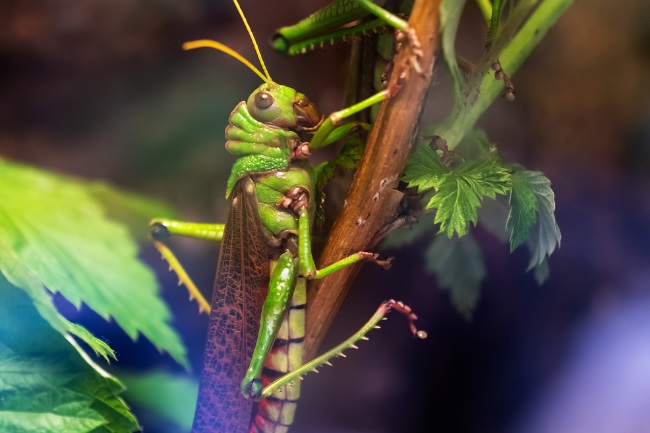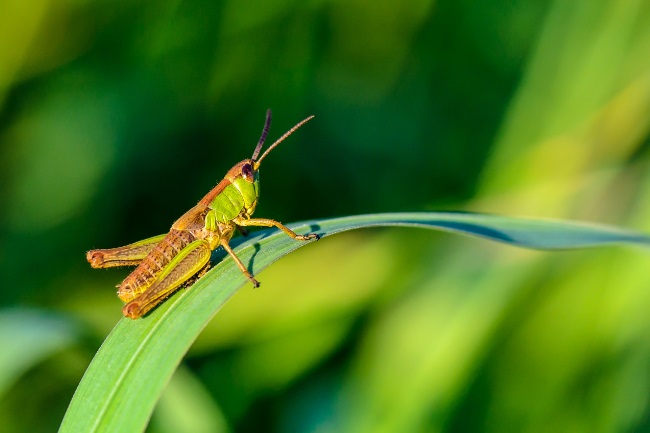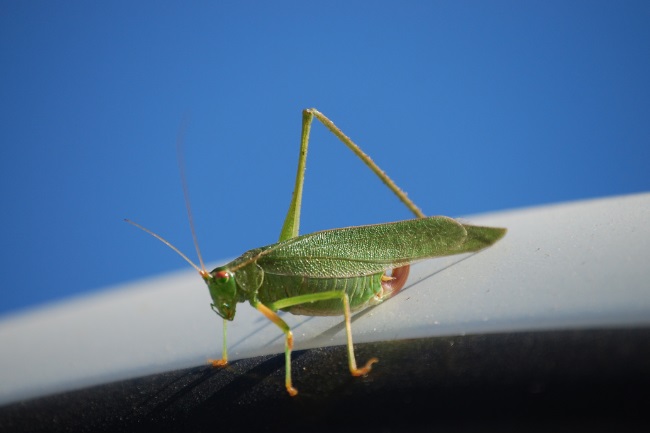Grasshoppers can lose their legs if a predator attacks them or if they are damaged. Sometimes they will drop their legs if they have been caught. The damage can be repaired if they are still a juvenile and going through moults, however not if they are an adult.
Contents
Regeneration
There’s no doubt that the ability of certain animals to regenerate is fascinating. For us humans, unfortunately, there’s not much we can do if we lose a limb. Modern medicine can try to repair the damage or offer us bionic replacements, but there’s no chance of spontaneously growing a new leg or arm.
| Stage | Description |
|---|---|
| Leg Loss | Grasshoppers may lose a leg due to injury, predator attack, or other factors. |
| Wound Healing | After leg loss, the wound at the site of leg detachment begins to heal. |
| Regeneration Initiation | Regeneration is initiated when cells near the wound site start to divide and form a regenerative structure called a blastema. |
| Blastema Development | The blastema grows and differentiates into various tissues, including muscles, nerves, and exoskeleton, to form a new leg. |
| Leg Regrowth | Over time, the new leg continues to grow and develop until it reaches a functional state. |
Yet, regeneration is found across a surprising number of animal species. It is a well-studied phenomenon, with scientists hypothesising that if this process were better understood, we might be able to replicate it with human cells, meaning one day we really could simply grow new limbs to replace the old.

For most species, this magic trick can’t just be practised on just any old body part, with specific limbs being suitable to be regrown. Many reptile species are well-known for regeneration, with tails being the most common appendages to have this ability. When startled or caught, reptiles such as the common lizard, or the grass snakes, will drop or shed their tail.
This has the advantage of distracting the predator, as they will often stop to eat the tail and not notice the rest of the animal disappearing into the vegetation. The tail will then slowly regrow, starting as a bit of an odd looking lump. The final tails are sometimes a slightly different colour from the rest of the animal, showing where the break line was.
Many sea creatures are well versed in regeneration. The starfish, for example, is very quick to lose one or two of its arms, also known as rays, if required for survival. Some starfish have been found to regenerate the whole of their body from only a remaining arm or part of a limb.
The most famous regenerator has to be axolotl. This strange pink salamander is not only able to regenerate any lost limbs, but it can regenerate vital organs such as its heart and parts of its brain. It can do this throughout its life, meaning it’s able to survive the odd hungry nip here and there.
Can grasshoppers regenerate?

It’s not uncommon for insects to lose limbs. Mostly this can happen if they are damaged or if a predator grabs their legs as they are trying to escape. Grasshoppers have the ability to jettison one or both of their legs if need be.
| Factor | Description |
|---|---|
| Age | Younger grasshoppers generally exhibit faster and more robust leg regeneration compared to older individuals. |
| Nutrition | Adequate nutrition, including a balanced diet and availability of essential nutrients, supports leg regeneration. |
| Environmental Conditions | Favorable environmental conditions, such as optimal temperature and humidity, can facilitate leg regeneration. |
| Hormonal Regulation | Hormones play a crucial role in regulating the process of leg regeneration in grasshoppers. |
| Genetic Factors | Genetic variations among grasshopper populations can influence the efficiency and success of leg regeneration. |
To do this, the nerve between the second and third limb segments breaks; however, no tissue damage is occasioned. For many grasshoppers, their defence mechanism is to hop or fly away from danger. In most circumstances, this will be enough, but with a quick opponent, the back legs are the most vulnerable area, which will be the easiest to grab hold of. Here the grasshopper has two choices, to be consumed entirely or give up on their captured limb.
Whether or not a grasshopper’s limb will return is primarily to do with the life stage the insect is at. As grasshopper grow, they moult. If they have lost a limb early on in their moulting process, they may be able to regrow it a little at a time during each moult. However, if they lose it as an adult or towards the end of their moulting growth spurts, they can remain limbless for the rest of their lives.
Also read: How Far and High can Grasshoppers Jump? (Who Jumps Best?)
Can grasshoppers live without their legs?

The good news for a grasshopper is that their back legs often aren’t essential to go on living. What is critical is the ability to keep feeding. Many grasshoppers can fly, meaning they have an alternative means of transportation. Even those that can’t fly still have four legs to get around on.
However, a grasshopper’s body is weighted so that balancing requires six legs, meaning getting around can be much more difficult without all of them. If they struggle to move easily, they may not be able to get enough food to survive and will slowly starve to death. Additionally, a less agile grasshopper is at increase risk of being eaten by a predator.
Aside from eating a grasshopper’s main aim is to mate. As many grasshoppers use their legs to make the noise that calls in their mates, it can be more challenging to get a willing partner. As the females often don’t sing as much as the males, it may be easier for them to get a little romance if a little legless.
Be kind to nature
Engaging with nature is highly beneficial both for our understanding of it and for our mental health. Part of this can be holding animals, such as insects. But it’s easy to forget how vulnerable these creatures can be and how easily we can damage them. Handling a grasshopper roughly could result in them losing a limb. While they can live without a leg, or sometimes even two, their lives will be significantly more difficult because of it. After all, not every animal is as lucky as an axolotl and can conjure up new limbs at will.

